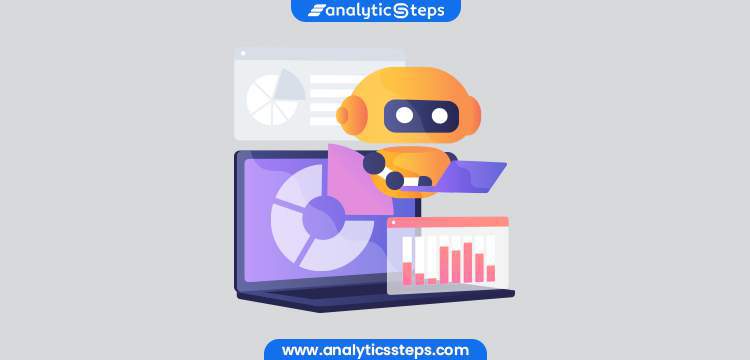The Opportunities and Challenges that AI and Machine Learning Bring to Workforce Management
- AS Team
- May 11, 2024

In the ever-evolving landscape of workforce management (WFM), the integration of artificial intelligence (AI) and machine learning (ML) technologies has emerged as a transformative force. These advanced technologies offer a plethora of opportunities to optimize operations, enhance employee productivity, and deliver superior customer experiences.
However, along with these opportunities come a set of challenges that businesses must navigate adeptly. Let’s delve into the realm of AI and ML in workforce management, exploring both the promises they hold and the hurdles they present. To get the most from this article, read more about enterprise workforce management capabilities and functionality.
Opportunities of AI and Machine Learning in Workforce Management
-
Improved Forecasting Accuracy: AI and ML algorithms have the capability to analyze historical data, identify patterns, and generate more accurate forecasts for staffing requirements. By leveraging predictive analytics, businesses can ensure optimal staffing levels to meet fluctuating demand, thereby enhancing operational efficiency.
-
Enhanced Scheduling Optimization: AI-powered scheduling algorithms can consider various factors, such as employee preferences, skill sets, and performance metrics, to create optimized schedules that align with business objectives. This not only improves employee satisfaction but also maximizes productivity and resource utilization within the contact center.
-
Real-Time Decision Making: ML algorithms can analyze real-time data streams from multiple sources, such as call volumes, agent performance metrics, and customer feedback, to make data-driven decisions on the fly. This agility enables contact centers to respond promptly to changing circumstances and deliver superior customer service.
-
Personalized Coaching and Training: AI-driven analytics can provide insights into individual agent performance, identifying areas for improvement and tailoring coaching and training programs accordingly. By offering personalized development opportunities, businesses can nurture talent and foster a culture of continuous improvement within their workforce.
-
Automation of Routine Tasks: AI-powered bots and virtual assistants can automate routine administrative tasks, such as data entry, scheduling, and reporting, freeing up human agents to focus on higher-value activities that require human judgment and empathy. This not only increases efficiency but also reduces operational costs in the long run.
Challenges of AI and Machine Learning in Workforce Management
-
Data Quality and Accessibility: AI and ML algorithms rely heavily on data inputs for training and decision-making. Ensuring the quality, consistency, and accessibility of data across disparate systems and platforms can be a significant challenge for organizations, especially those with legacy infrastructure.
-
Algorithm Bias and Fairness: AI and ML algorithms are susceptible to bias inherent in the data used for training, which can result in unfair treatment or discrimination, particularly in areas such as hiring, promotions, and performance evaluations. Ensuring algorithmic fairness and transparency is crucial to building trust and mitigating potential risks.
-
Change Management and Adoption: Implementing AI and ML technologies requires organizations to navigate complex change management processes and overcome resistance to adoption from employees who may perceive automation as a threat to their jobs or autonomy. Effective communication, training, and stakeholder engagement are essential to fostering a culture of acceptance and collaboration.
-
Privacy and Security Concerns: The use of AI and ML technologies in workforce management raises privacy and security concerns related to the collection, storage, and processing of sensitive employee data. Ensuring compliance with data protection regulations, implementing robust security measures, and providing transparency regarding data usage are imperative to safeguarding employee privacy and maintaining trust.
-
Ethical Considerations: The ethical implications of AI and ML in workforce management, such as the impact on job displacement, employee well-being, and societal equity, cannot be overlooked. Organizations must proactively address these concerns and prioritize ethical decision-making to ensure that the benefits of AI and ML are distributed equitably and responsibly.
The Path Forward
Integrating AI and ML technologies presents immense opportunities and formidable challenges for workforce management. By harnessing the power of AI and ML, businesses can unlock new levels of efficiency, productivity, and innovation within their contact centers. However, realizing these benefits requires a strategic approach that addresses the inherent complexities and risks associated with AI and ML adoption.
It is essential to prioritize data quality, algorithmic fairness, change management, privacy and security, and ethical considerations. By doing so, businesses can leverage AI and ML technologies to drive positive outcomes for their workforce, their customers, and society as a whole. With careful navigation and thoughtful execution, the promises of AI and ML in workforce management can be realized, ushering in a new era of excellence and agility in contact center operations.
Trending blogs
5 Factors Influencing Consumer Behavior
READ MOREElasticity of Demand and its Types
READ MOREAn Overview of Descriptive Analysis
READ MOREWhat is PESTLE Analysis? Everything you need to know about it
READ MOREWhat is Managerial Economics? Definition, Types, Nature, Principles, and Scope
READ MORE5 Factors Affecting the Price Elasticity of Demand (PED)
READ MORE6 Major Branches of Artificial Intelligence (AI)
READ MOREScope of Managerial Economics
READ MOREDifferent Types of Research Methods
READ MOREDijkstra’s Algorithm: The Shortest Path Algorithm
READ MORE

Latest Comments